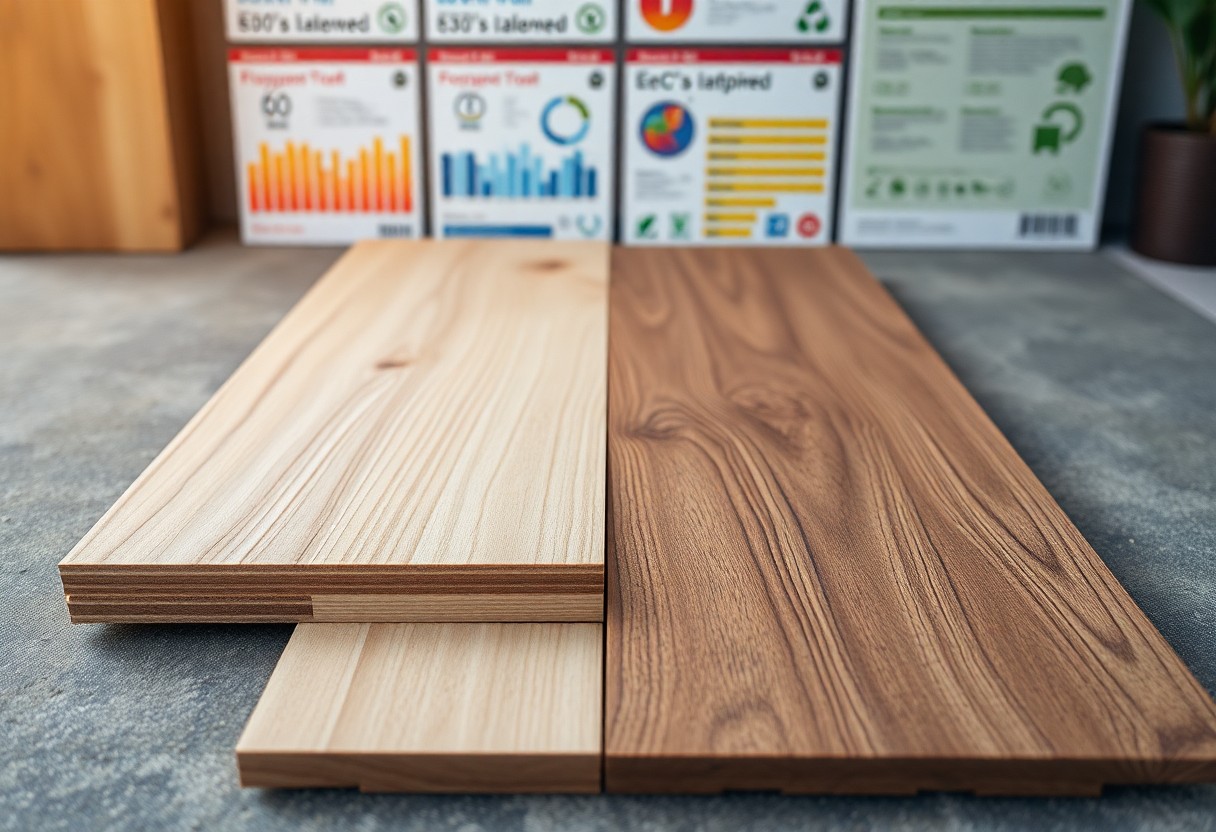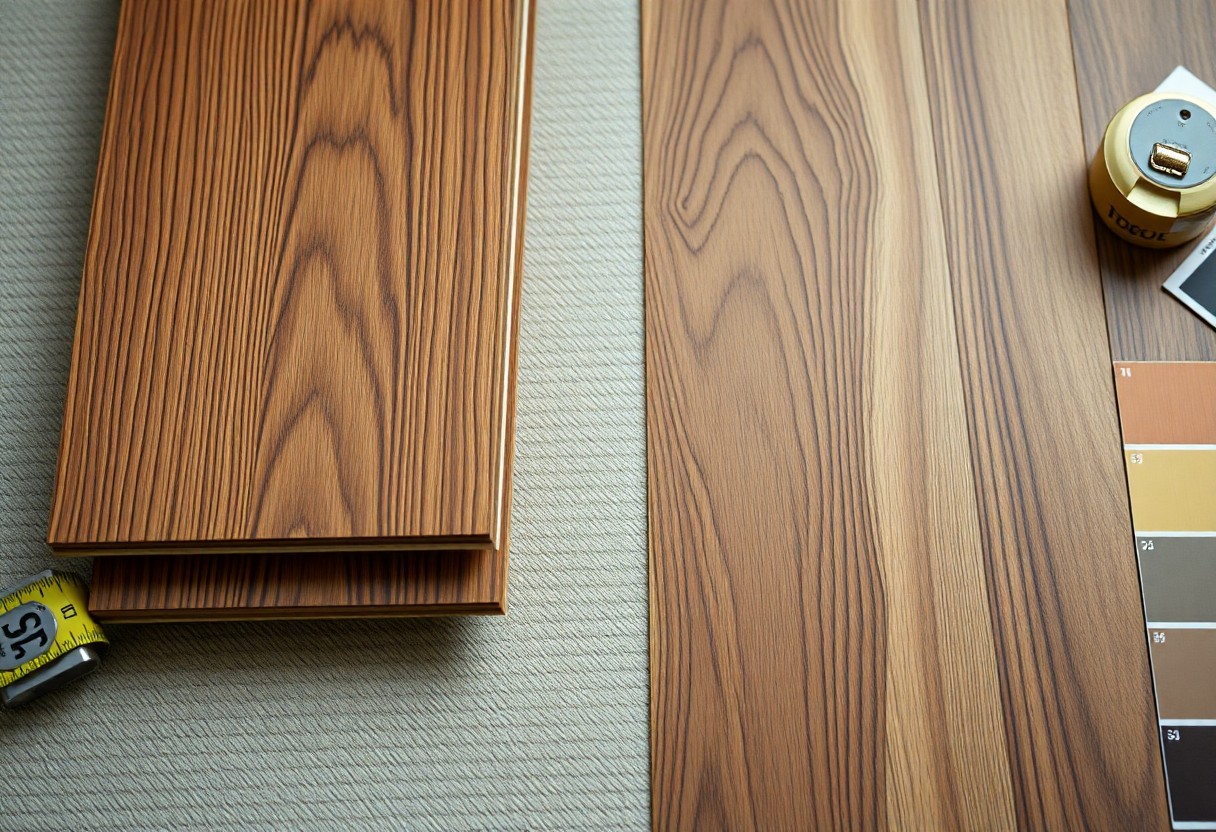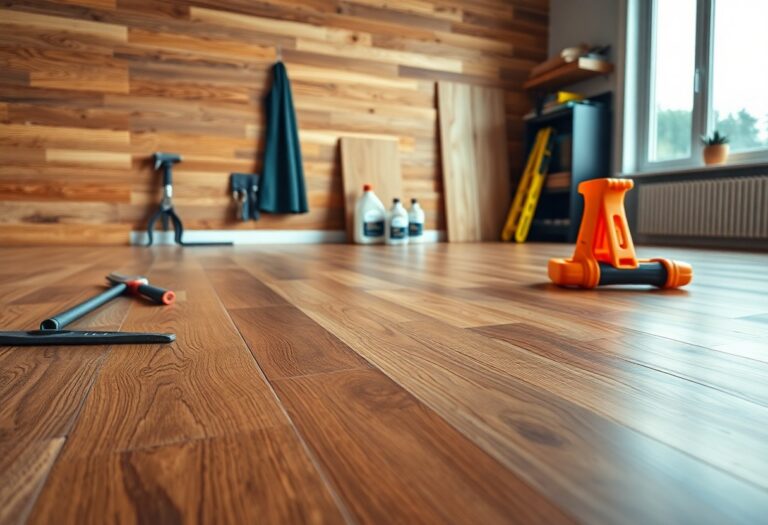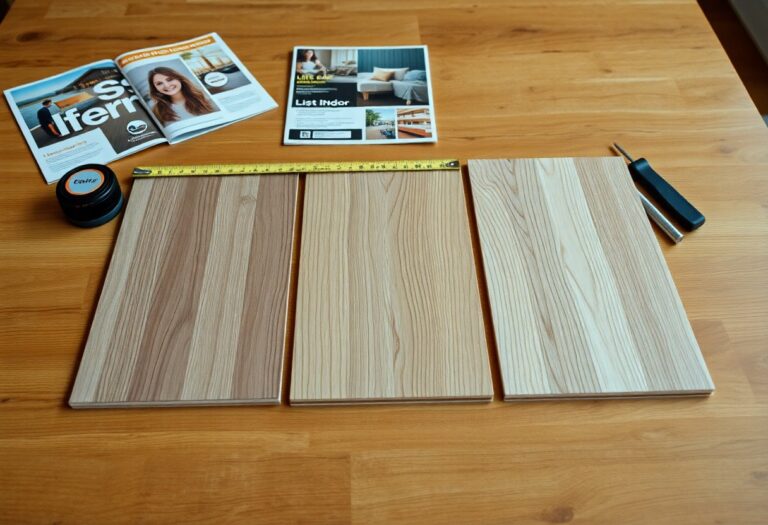It’s crucial to understand the differences between engineered flooring and solid hardwood before making your purchase. Each option has its unique benefits and drawbacks that can significantly impact the longevity, maintenance, and overall aesthetic of your space. By considering factors such as installation, durability, and cost, you can make an informed choice that aligns with your lifestyle and design preferences. This guide will equip you with the necessary insights to select the right flooring for your home.
Overview of Engineered Flooring
Engineered flooring presents a versatile alternative to traditional hardwood, offering the aesthetic appeal of wood with enhanced durability and stability. Crafted from multiple layers, it effectively resists moisture and temperature fluctuations, making it suitable for various environments, including basements and over concrete slabs.
Definition and Composition
Engineered flooring consists of a top layer of real hardwood veneer attached to several layers of plywood or high-density fiberboard. This layered construction provides strength and resistance to warping, allowing the flooring to maintain its appearance and performance over time.
Advantages of Engineered Flooring
Opting for engineered flooring offers several advantages, including superior stability, ease of installation, and a wide range of design options. Its multi-layer construction minimizes the risk of expansion and contraction, making it ideal for areas prone to humidity, and it can be installed using various methods, such as glue-down or click-lock systems.
In addition to stability, engineered flooring comes in numerous styles and finishes, allowing you to achieve your desired aesthetic without compromising functionality. You can choose from various wood species, stains, and widths, enabling you to customize your space according to your design vision. With easy maintenance and affordability, engineered flooring is a practical choice for both residential and commercial spaces, ensuring long-lasting beauty while fitting diverse budgets and preferences.
Overview of Solid Hardwood
Solid hardwood flooring is a traditional option made from a single piece of wood, typically cut from a hardwood tree. This flooring type offers a classic look, featuring unique grain patterns and colors, which add warmth and character to any space. Prized for its durability and the ability to be refinished multiple times, solid hardwood remains a popular choice among homeowners seeking to enhance their interior design.
Definition and Composition
Solid hardwood flooring consists entirely of natural wood, sourced from various species such as oak, maple, and cherry. Each plank is crafted from a single solid piece, allowing for a thickness generally between 3/4 inch and 5/16 inch. This genuine wood construction contributes to its strength and longevity, making it an attractive investment for residential spaces.
Advantages of Solid Hardwood
Solid hardwood flooring offers several advantages, including its longevity, timeless aesthetic, and ease of refinishing. Since it can last for decades, you may find that your investment pays off over time. Moreover, the natural beauty of wood contributes to your home’s overall value and appeal, fostering a welcoming atmosphere.
With a lifespan of 100 years or more when properly maintained, solid hardwood stands out for its sustainability and durability. The ability to sand and refinish your floors multiple times helps restore their appearance and extends their life significantly. Additionally, the warmth and richness of hardwood can elevate your property’s market value, making it an attractive choice for buyers. You benefit from a unique, natural product, with each plank telling its own story through its distinctive grain and color variations. This timeless appeal often complements various interior design styles, contributing to a cohesive look in your home.
Key Differences Between Engineered and Solid Hardwood
Engineered and solid hardwood flooring offer distinct characteristics that can significantly impact your buying decision. Solid hardwood is made from a single piece of timber, allowing for refinishing and long-term durability. In contrast, engineered hardwood consists of multiple layers, providing enhanced stability and resistance to moisture. Choosing between them often comes down to your specific needs, including climate, installation method, and desired appearance.
Durability and Maintenance
Engineered hardwood generally offers superior resistance to fluctuating humidity and temperature, making it ideal for areas prone to moisture. Its multi-layer construction helps prevent warping, while solid hardwood can be refinished several times, extending longevity. Maintenance for both types involves regular cleaning, but engineered flooring typically requires less upkeep, especially in high-moisture environments.
Aesthetic Appeal and Design Options
Engineered hardwood comes in an array of finishes and textures, similar to solid hardwood but often with a wider selection of styles. The thin veneer of natural wood on engineered boards allows for intricate designs and finishes that can mirror solid hardwood. This gives you the flexibility to choose aesthetics that best fit your interior décor without sacrificing quality.
The visual appeal of engineered hardwood is enhanced by its ability to replicate the look of exotic wood species, offering patterns and colors that meet diverse design preferences. With advancements in technology, you can find engineered options that closely resemble oak, maple, or walnut, allowing you to achieve the desired ambiance in your space without the high cost of solid hardwood. This versatility makes it a popular choice among homeowners looking for both style and practicality.
Installation Methods
Installation methods for engineered and solid hardwood differ significantly, impacting your project timeline and cost. Engineered hardwood can be installed via floating, glue-down, or nail-down techniques, providing versatility in various settings. Solid hardwood typically requires nail-down installation, which can be more labor-intensive and time-consuming.
Considering installation methods, engineered flooring’s adaptability means you can choose a floating installation that allows for quicker project completion and less mess. This is particularly advantageous in DIY projects or when working in a tight timeframe. Additionally, the option to glue down engineered boards adds further flexibility for different subfloors, while solid hardwood’s installation often requires specific conditions, such as a plywood subfloor for proper nailing. Understanding these nuances is necessary for planning your flooring project effectively.
Cost Comparison
| Type | Average Cost per Square Foot |
|---|---|
| Engineered Flooring | $3 – $10 |
| Solid Hardwood | $5 – $15 |
Initial Costs
Engineered flooring typically has a lower initial cost, ranging from $3 to $10 per square foot, making it an attractive option for budget-conscious consumers. Solid hardwood, on the other hand, usually costs between $5 and $15 per square foot, reflecting its traditional appeal and the expense associated with sourcing high-quality wood.
Long-term Investment
While engineered flooring is more affordable upfront, solid hardwood can offer greater long-term value due to its durability and ability to be refinished multiple times. This makes solid hardwood an appealing choice for homeowners who plan to remain in their properties for years and seek to enhance resale value.
Solid hardwood often outlasts engineered options and can maintain its aesthetic appeal over decades, adding to the overall investment. Over time, the need for fewer replacements or repairs with solid hardwood can justify the higher initial cost. Additionally, solid hardwood floors can add significant value to your home, making them a worthwhile investment long-term. In contrast, engineered flooring might need replacement sooner, thus increasing overall expenses in a shorter time frame.

Environmental Impact
Choosing between engineered flooring and solid hardwood spans more than aesthetics and durability; it also involves understanding their environmental footprint. Your choice can significantly impact forests, water usage, and energy consumption throughout the product’s life cycle. Assessing these factors helps you make an informed decision that aligns with your values and environmental goals.
Sustainability of Materials
Engineered flooring is often more sustainable than solid hardwood. Typically, it uses less hardwood per square foot, utilizing a plywood backing that can incorporate faster-growing trees. This practice helps reduce the strain on hardwood forests, allowing you to choose a flooring option that supports sustainable practices while still providing the looks of natural wood.
Manufacturing Processes
Distinct manufacturing processes set engineered flooring apart from solid hardwood. Engineered wood undergoes layered construction, where thin slices of hardwood are bonded to high-quality plywood. This method not only enhances stability in fluctuating humidity but also minimizes waste, contrasting with the lumber-intensive approach of solid hardwood production.
The manufacturing of engineered flooring typically involves the use of advanced technology to create a multi-layered product. This process can result in lower emissions and reduced energy use per board foot compared to solid hardwood, where harvesting a full log is necessary. For instance, engineered wood can be made using adhesives that are low in volatile organic compounds (VOCs), enhancing indoor air quality. Additionally, the ability to source sustainably logged trees decreases the overall environmental impact, making it a preferred choice for eco-conscious consumers.
Recommendations for Buyers
When choosing between engineered flooring and solid hardwood, carefully assess your specific needs and preferences. Consider the type of environment you live in, your budget, and how much wear and tear your flooring will endure. By evaluating these factors, you can determine the best option for your home.
Factors to Consider
A few key elements will influence your decision-making process:
- Budget constraints
- Moisture levels in your home
- Installation method
- Long-term flooring goals
- Maintenance requirements
The right choice hinges on these considerations and how they align with your lifestyle.
Personal Preferences and Lifestyle
Your day-to-day activities and design choices play a vital role in selecting flooring. Consider the ambiance you want to create, whether it’s cozy, modern, or rustic. If you have pets or children, durability and ease of maintenance become necessary factors, while minimalist tastes might lean towards a sleek, uniform appearance. Moreover, regional climate can impact your choice; for instance, humid areas may benefit more from engineered wood due to its resistance to moisture.
To wrap up
Summing up, when choosing between engineered flooring and solid hardwood, you should consider your specific needs, aesthetic preferences, and the installation environment. Engineered flooring offers greater moisture resistance and can be a more affordable option, while solid hardwood provides timeless appeal and longevity. Evaluate factors such as climate, expected foot traffic, and maintenance requirements to make the best decision for your space, ensuring that your choice aligns with your lifestyle.





